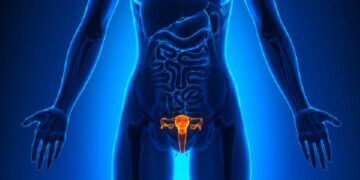Are you afraid to approach the delicious food because of obesity, are you still fighting for dieting, now pay attention, the reason that affects your figure may be some of your incorrect eating habits Oh! Now for you to recommend 5 kinds of healthy eating habits to keep you in good shape, so that the meat does not fly, while eating thin!
Eating habits while eating thin obesity food dieting body figure diet three meals a day
Daily habits 1: three meals a day
Weight loss principle: some people think that saving a meal can reduce calorie intake, this view is considered wrong by nutritionists. The brain will accumulate energy until the next meal if the time between meals is too long. In other words, if you don’t eat this meal, you will eat more than normal at the next meal, and you will also accumulate a lot of fat as a result. It turns out that one less meal does not mean one less meal of calories.
Implementation steps: stick to three meals a day, just adjust eating habits.
Daily habit 2: soup first, then rice
Weight loss principle: eating order first soup and then meat is more in line with the concept of health, and can lose weight, which is very popular so that the intake of calories to reduce weight loss and slimming techniques. Follow a healthy eating order, will not easily feel hungry, and reduce the desire to eat snacks.
Implementation steps: first drink more water, lower calorie soup, these soups can quickly produce a sense of satiety; then eat vegetables, compared to mixed with salad dressing vegetables, more should be taken first boiled or stir-fried vegetables; then the main food, bread, rice row third to eat, meat, fish and other protein and fat food only then eat together.
Daily habit 3: slow swallowing
Weight loss principle: through a small amount of eating to produce a sense of satiety, and pay attention to fine chewing. The advantage of chewing more is that even a small amount of food can still send signals to the brain that you are full. Often because of work and gobbling, over time it becomes a habit, although worrying about whether their belly is still the original shape, once you pick up the chopsticks, but still swallowed whole, the wind rolled. If you are not careful, you will eat too fast and too much, and you will have too much nutrition.
Implementation steps: Chewing each mouthful of food at least 30 times is the key. Even if you don’t eat much in one bite, but as long as you chew slowly and let the food stay in your mouth longer, the more you can get a sense of fullness.
Daily habit 4: eating “dawdle”
Weight loss principle: to extend the meal time to 20 minutes a meal. The brain often takes 20 minutes to tell itself “I’m full”. So experts recommend that meal time control in more than 20 minutes, to eat slowly, which can “eat while thin”. And medical experts also believe that meals eat fast food, used to even eat at home like a race, which is not a good appetite performance. People who eat too fast, often gastrointestinal and not good, but also easy to eat too much and cause obesity.
Steps to implement: switch hands to make chopsticks. Use the hand you don’t often use to hold the chopsticks to eat, so you don’t take too many dishes at once, so the amount of each bite is naturally reduced. Or put your chopsticks down after each bite to get into the habit of chewing your food well.
Daily habit 5: brush your teeth after meals
Weight loss principle: in order to eliminate the bad habit of craving, brush your teeth immediately after the main meal is a good way, or when you realize that you have eaten too much, brush your teeth quickly, the feeling of freshness in the mouth will make a person’s mood, but also easy to have “just brush your teeth, do not want to destroy it because of snacks” idea.
Implementation steps: use your favorite brushing tools and toothpaste, even if the price is more expensive as long as it can help you prevent obesity, it is also worth it. People who usually have a sweet tooth may want to choose a fruit-flavored toothpaste, so that the overflowing sweetness in the mouth sends a message of satiety to the brain, which is also said to have been proven to have an appetite suppressant effect.





































